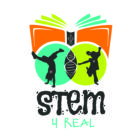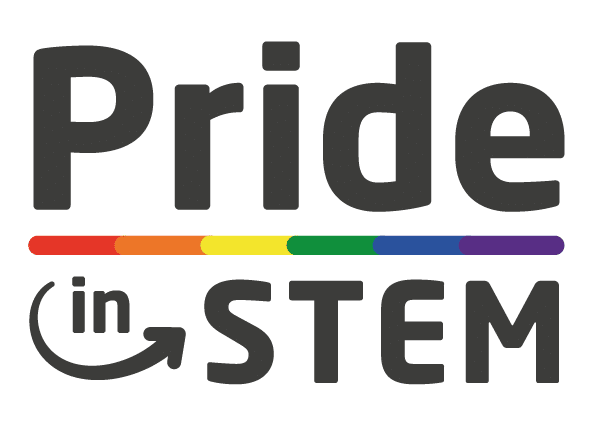Pride in Science
Science-minded. Tall. Parent. Innovator. Juggler. Blond. Educator. These are just a few of the labels that have been assigned to me. One other label that could be used is Transgender. These labels do not define me but each are a component that makes me who I am. That last label; however, is one that causes much consternation to others and frankly, to myself. Many people have difficulty in understanding what being transgender is all about. Being Transgender has a special meaning to me as an educator and as a scientist. It is vital to discuss the implications of what it might mean to the youth today that are dealing with being LGBTQI+ (Lesbian, Gay, Bisexual, Transgender, Queer, Intersex) within our educational system.
The months of May and June 2019 have brought about many stories in the news about the LQBTQI+ community, and in particular the issues of transgender individuals in our society. It makes some sense, as the month of June is recognized by many to be the “LGBT Pride Month” to commemorate the Stonewall riots which occurred at the end of June 1969. The Stonewall riots were a series of violent confrontations between LGBT activists and police due to police harassment on the patrons of the Stonewall Inn, a bar in New York. From my perspective, there has been an uneven mix of some good stories that highlight inclusion and equity, and many stories that cause angst and division. I believe we live in tumultuous times here in America. The stress and polarization of our society can be felt down into our schools. On top of the national political disruptions, there are state, regional and local conflicts based upon ideology and experience. Being within a ‘marginalized’ community can be hard on the psych and LGBTQI+ students need support as they face society’s clash between conservative ideology and liberal progressivism.
When I first came to grips with my own gender identity I had already been working in education for over 15 years and was at a County Office of Education in a position of leadership in science education. The ‘transition’ of my external gender expression to match my true gender identity was sometimes a wonderful experience, but sad to say most of the time is was a rough road to walk. Don’t get me wrong, I am so thankful that I can now feel comfortable in my own skin and be my authentic self. However, many people in my life, professional and personal, had difficulty in understanding what it means to be transgender. There were a range of reactions I received, from acceptance on one end of the spectrum to downright hostility on the other. Many youth in our schools are facing similar negative types of reactions. The statistics bear out that statement. Recently, the Human Rights Campaign surveyed 10,000 LGBTQI+ identified youth in America and the results showcased the inequality and derision that is heaped upon them. About a third (29%) disagreed with the statement “There is at least one adult I can talk to about my personal problems” while only 17% of the non-LGBT youth disagreed with it. Over one-half of LGBT youth (54%) say they have been verbally harassed and called names involving anti-gay slurs such as “gay” and “fag.”1

The data continues to reveal daunting results. Suicide is the second leading cause of death among youth ages 10-24, and studies continue to show that LGBTQ youth are up to four times more likely to attempt suicide than their non-LGBTQ peers.2
I was fortunate that I had a support system that helped me as I announced my true gender identity. Many of our youth do not have that support. I hope that most would agree with me when I make the claim that our educational system is more than academic content. It is teaching to the whole child. This means that educators must understand that sometimes a child is hungry, sick, scared, or physically or emotionally hurting, which can shut down the learning process.
The old paradigm of the 3 Rs in education was ‘Reading, Writing, and ‘Rithmetic.’ This passé view has been updated to be ‘Rigor, Relevance and Relationships’. The California Next Generation Science Standards (NGSS) are based upon students grappling with phenomena that connects prior experience to new learnings through issues that are relevant and engaging for our youth. How teachers incorporate the 3-dimensional nature of NGSS and instruct towards a constructivist mindset provides the rigor. What many times is missing in the educational realm of Science and the STEM/STEAM fields is the relational aspect of education. Many times we, as educators, get caught up in teaching the academic standards about the biochemical nature of hormones or the genetic coding through inheritance, that we forget that the genes and hormones in front of us are living breathing youth that want to feel safe, validated, and affirmed in who they are. We sometimes miss the golden opportunity to teach about the academic through the lens of societal stories that reflect our student’s lives. Connecting and building trust between educator and student is just as important as academic expectations. Most of us in science education became passionate about the wonderful world of empirical evidence based upon models that we wanted to emulate – most scientists, science educators, and science communicators moved into their careers based upon the strong mentors they had in their lives.
When I was growing up, I had a mentor, a loving family, and amazing opportunities. Those “developmental assets3” aided me throughout my years and gave me the skill sets and fortitude to transition to my true gender. I had the background and support in my transition which ultimately helped me become a better person. After I transistioned I did not always have to fight gender dysphoria, the persistent conflicted feeling I had regarding the difference between by assigned sex at birth and my gender identity. Many of the LGBTQI +youth do not have the developmental assets like mentors, community support programs, faith-based organizations, and even support from educators. Having a support foundation is important because the more resources and examples you have in your life, the more likely you are to achieve your desired goals. LGBTQI+ youth have a much higher rate of isolation, discrimination, bullying, and mental health issues mainly due to society rejecting differences in terms of gender identity and sexual preference. Many of the students in our schools are starting to identify as LGBTQI+ as they see more role models coming out and transitioning, most of these role models are in careers other than science and the STEAM fields. This needs to change.
As educators we should be working not only on mastery of the NGSS performance expectations, Math practices and Common Core literacy standards for science, & technical subjects in our STEM/STEAM education, but also connecting with our youth, especially the LGBTQI+ youth who face harmful amounts of discrimination and fewer support structures. How do we do this you might ask. What I appreciated in my transition was the showing of empathy by others. There were people in my life that were willing to express appreciation and respect towards me which validated my core identity. I valued people that really wanted to know what was happening in my life and showing how they could support me as I transitioned. Basically it is following the golden rule. The golden rule is that idea we all know about but unfortunately somehow we tend to gloss over in our lives. It’s a powerful rule, the Golden Rule, “Do unto others as you would have them do unto you.” As educators we need to take the time to make the golden rule an actionionable item, not just words. There is an organization called the Josephson Institute of Ethics that created a program called CharacterCounts4 that delineates the golden rule into pillars of character:
Be role models of these pillars of character, especially to our LGBTQI+ youth. Build trust by appreciating the uniqueness in each person. Show compassion and an interest in the lives of our students. Emulate respect and show that society can be fair. Get involved in demanding equitable policies from our legislators and politicians. Take leadership, responsibility and help support Gay Straight Alliance clubs. Reach out and be the teacher that is determined to inspire your students. Be that role model that you had, that someone who sparked your desire into science and STEM/STEAM education! Then and only then can we truly embody the spirit of the NGSS in being for ALL STANDARDS and ALL STUDENTS!

Jennifer Janzen is the Director of Innovation & Instructional Support for Santa Clara County Office of Education where she serves and supports the school districts in the silicon valley providing professional learning opportunities to STEAM educators. Ms. Janzen’s background includes; entomology research at the USDA Agricultural Research Station, as well as teaching AP Biology, Life Science, Anatomy & Physiology, Conceptual Physics, General Math, and Astronomy in two school districts in central California. Jennifer served as the Science Consultant for Tulare County Office of Education for 13 years and for a time was a California regional lead of science for six counties. Ms. Janzen has an MA in Educational Administration and is also a qualified STEM/STEAM grant writer.
- https://assets2.hrc.org/files/assets/resources/Growing-Up-LGBT-in-America_Report.pdf
- https://assets2.hrc.org/files/assets/resources/YouthReport-California-Final.pdf
- https://www.search-institute.org/our-research/development-assets/developmental-assets-framework/
- https://charactercounts.org/program-overview/six-pillars/

